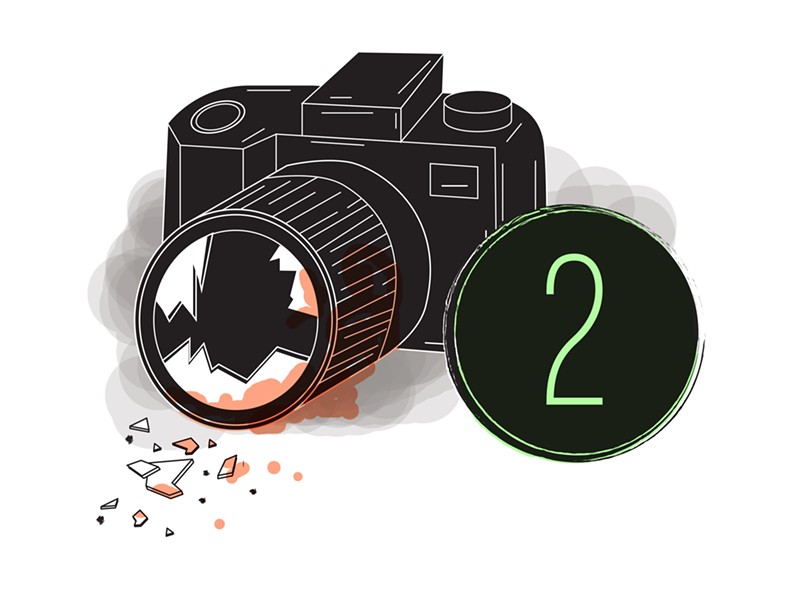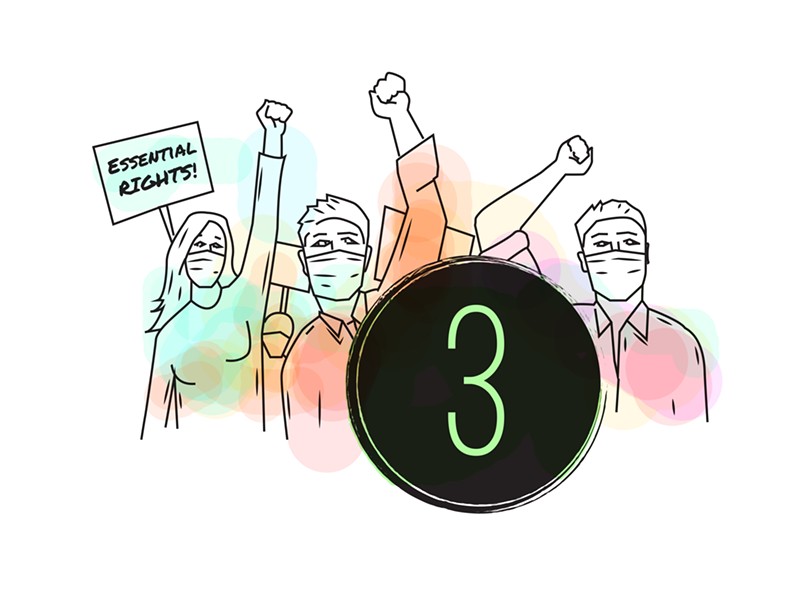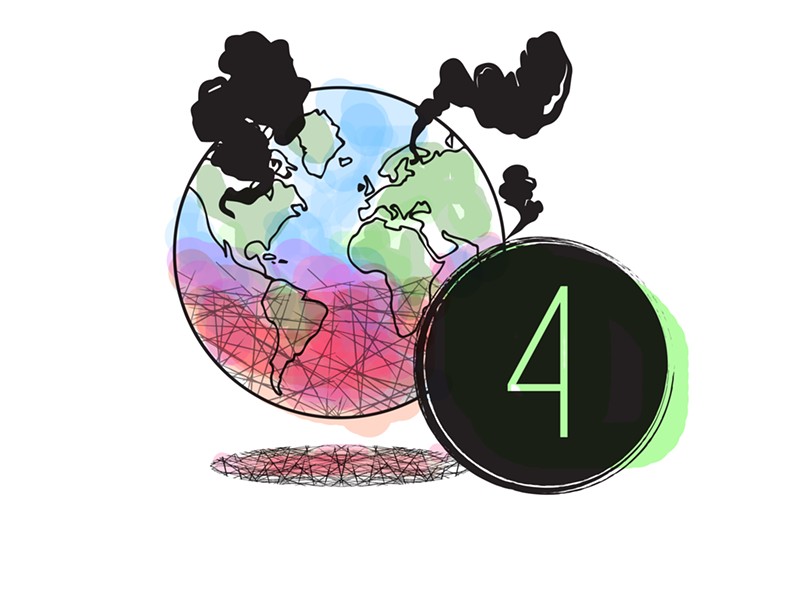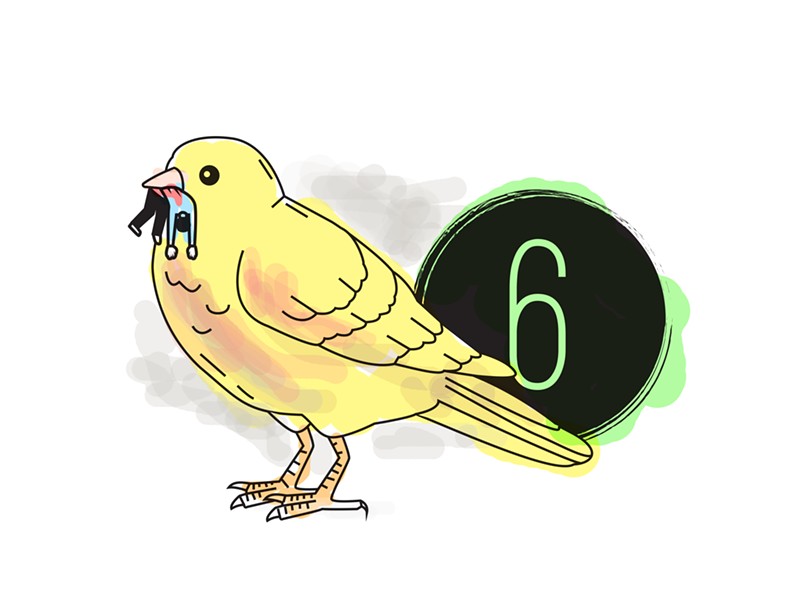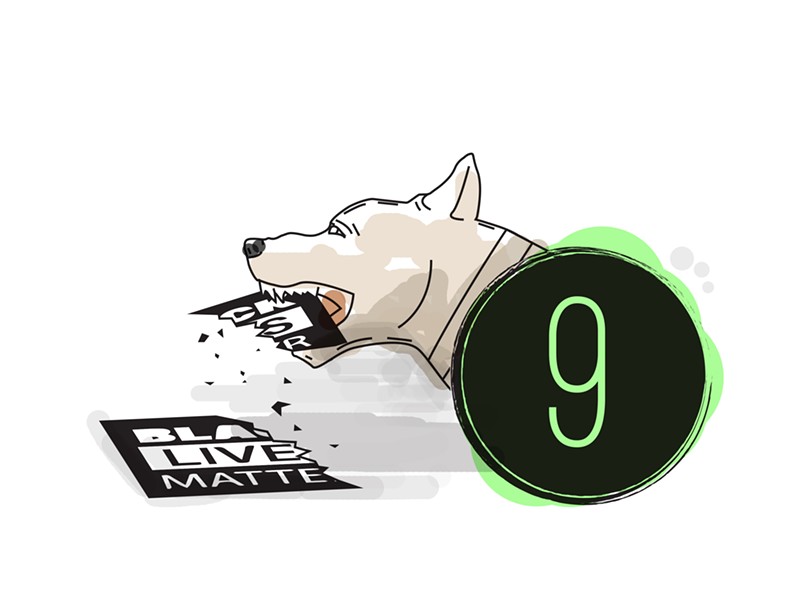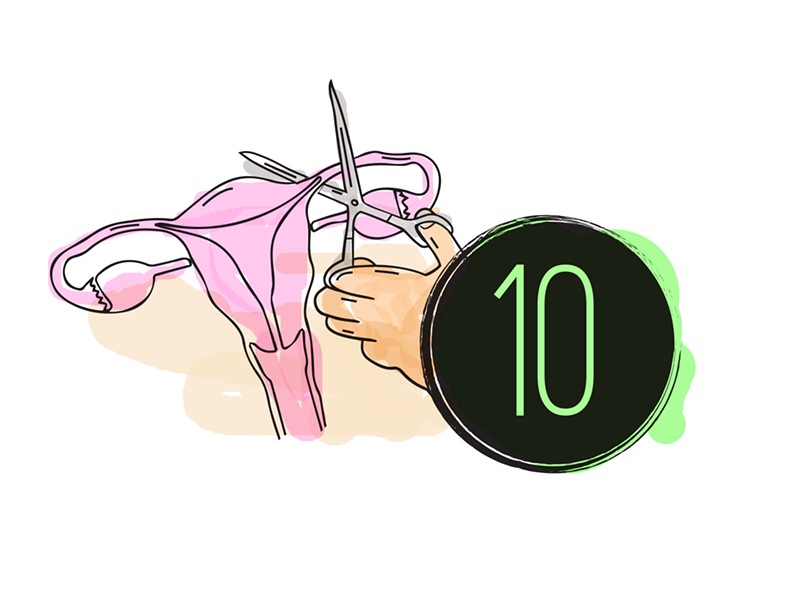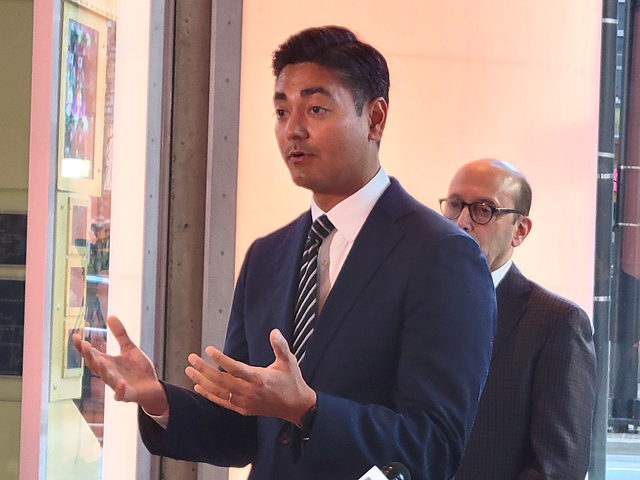
Since 1976, Project Censored has identified the most important stories of each year on the basis of the exposure that was denied to them by forces beyond the First Amendment. Its goal is to educate students and the public about the importance of a truly free press for democratic self-government. This list covers the most under-reported stories of the year, as compiled by the project. Capsules have been edited for space. More details and a full book, State of the Free Press, are available at projectcensored.org.
Project Censored’s co-directors Mickey Huff and Andy Lee Roth title their introduction to this year’s edition of State of the Free Press, “A Return to News Normalcy?” drawing a direct parallel between our world today to that of post-World War I America, “When the United States faced another raging pandemic and economic recession,” with other sources of tumult as well:
“The United States then had experienced a crackdown on civil liberties and free speech in the form of Espionage and Sedition Acts; racial tensions flared during the Red Summer of 1919 as violence erupted from Chicago to Tulsa; Prohibition was the law of the land; and the first wave of US feminism ended with the passage of the 19th Amendment.”
Project Censored isn’t alone in drawing parallels to a century ago, of course. The pandemic above all has expanded journalistic horizons, as a matter of necessity. To a lesser extent, the threat to American democracy — part of a worldwide trend of democratic backsliding — has done so as well. But though some have expanded their horizons, many more continue as if little or nothing has fundamentally changed. Day-to-day news stories perpetuate the fantasy that normal has already returned. And in one sense they’re right: The normal patterns of exclusion and suppression that Project Censored has been tracking for over 40 years continue to dominate, with even the latest wrinkles fitting into well-established, if evolving, broad patterns that are depressingly familiar.
These patterns are reflected in Project Censored’s top 10 list, with stories about labor struggles, racism, threats to health, the environment and free speech.
The point of Project Censored has never been just to expose significant stories that have been ignored, but rather to expose them as portals to a wider landscape of understanding and action.
In that spirit, here is a summary of 2021’s top 10 censored stories:
Prescription Drug Costs Set to Become a Leading Cause of Death for Elderly Americans
“Soaring prescription drug costs have been widely reported by corporate news outlets,” Project Censored notes, but they’ve utterly ignored the staggering resulting cost in human lives. More than 1.1 million seniors enrolled in Medicare programs could die prematurely in the next decade due to unaffordable prescription drugs, according to a November 2020 study reported on by Kenny Stancil for Common Dreams.
“As medicines become increasingly expensive, patients skip doses, ration prescriptions, or quit treatment altogether,” Project Censored explains, a phenomenon known as “cost-related nonadherence,” which will become “a leading cause of death in the U.S., ahead of diabetes, influenza, pneumonia, and kidney disease” by 2030, according to the study by the nonprofit West Health Policy Center and Xcenda, the research arm of AmerisourceBergen, a drug distributor.
“(E)ven with Medicare insurance, what seniors pay is linked to a drug’s price,” the study explained, which allowed them to “model how cost-related nonadherence would change under policies that would reduce drug prices, such as Medicare negotiation.” The study focused on five medical conditions that “significantly affect seniors and for which effective pharmaceutical treatments are available,” including three types of heart disease, chronic kidney disease and type B diabetes.
“The good news is that policy changes can curb the power of Big Pharma, resulting in far fewer avoidable deaths,” Stancil reported. “Medicare negotiation is projected to reduce drug prices and seniors’ cost-sharing, which could prevent nearly 94,000 seniors’ deaths annually and save $475.9 billion,” the study stated as one of its key findings.
“As a model for policymakers, the study pointed specifically to the Elijah E. Cummings Lower Drug Costs Now Act (H.R. 3),” which passed the House in December 2019, but died in the Senate. It’s been reintroduced after Joe Biden “declined to include Medicare negotiation in his $1.8 trillion American Families Plan proposal.”
Journalists Investigating Financial Crimes Threatened by Global Elites
Financial crimes of global elites, involving the flow of dirty money through some of the world’s most powerful banks, have made major headlines in recent years, most notably with the Panama Papers in 2016 and the FinSen Files in 2020. But we’d know a great deal more if not for the flood of threats faced by journalists doing this work — a major story that hasn’t been told in America’s corporate media, despite a detailed report from Foreign Policy Centre (FPC), “Unsafe for Scrutiny,” released in November 2020.
The report was based on a survey of 63 investigative journalists from 41 countries, which found that 71% had experienced threats and/or harassment while doing their investigations, with a large portion of those (73%) experiencing legal threats as well. Its findings were described by Spencer Woodman in an article for the International Consortium of Investigative Journalists (ICIJ).
“The report found that legal threats are chief among the types of harassment facing journalists conducting financial investigations, and often seek to exploit a skewed balance of power between often-underfunded reporting enterprises and the legal might of attorneys hired by the world’s wealthiest people and corporations,” Woodman wrote. “Focusing on frivolous cases known as ‘strategic lawsuits against public participation,’ or SLAPPs, the report asserts that such actions ‘can create a similar chilling effect on media freedom to more overt violence or attack.’” Legal threats are often communicated via private letters, “and, if successful in achieving their aim, the public will never know,” the report said.
Physical threats and online harassment were also a grave concern, but they were geographically uneven. “While no journalists surveyed in North America reported physical threats, 60% of respondents working in sub-Saharan Africa, and 50% of respondents from North Africa and the Middle East region reported threats of physical attack,” Woodman noted.
The silence about this silencing has been deafening. There has been some coverage overseas, but Project Censored says to date “no major commercial newspaper or broadcast outlet in the United States has so much as mentioned the FPC’s report.”
Historic Wave of Wildcat Strikes for Workers’ Rights
After millions of people were designated ‘essential workers’ when the U.S. went into lockdown in March 2020, thousands of wildcat strikes erupted to challenge dangerous working conditions and chronic low wages, exacerbated by refusal to protect against COVID-19 and cutting or sharply increasing the cost of medical insurance for those who had it. A further strike surge was driven by “Black and Brown workers using digital technologies to organize collective actions as a way to press some of the demands for racial justice raised by Black Lives Matter and George Floyd protestors,” Project Censored notes. The nation’s fourth busiest port, Charleston, South Carolina, shut down during George Floyd’s funeral on June 9, for example.
At the labor news website Payday Report, Mike Elk created a continuously updated COVID-19 Strike Wave Interactive Map, which had identified “1,100 wildcat strikes as of March 24, 2021, many of which the corporate media have chosen to ignore,” according to Project Censored, including “more than 600 strikes or work stoppages by workers in solidarity with the Black Lives Matter movement,” in June 2020 alone, according to Elk.
“While local and regional newspapers and broadcast news outlets have reported on particular local actions, corporate news coverage has failed to report the strike wave as a wave, at no time connecting the dots of all the individual, seemingly isolated work stoppages and walkouts to create a picture of the overarching trend,” Project Censored reports.
The sole exception where there was national coverage was in August 2020 when highly-paid baseball and basketball pro athletes walked out in violation of their contracts to protest the shooting of Jacob Blake by Wisconsin police. The coverage ended quickly once they returned a few days later.
Wildcat strikes occur when workers simply stop working, often in response to a specific incident, such as employer actions putting lives at risk by skimping on protective gear or attempting to cut workers’ healthcare.
“Climate Debtor” Nations Have “Colonized” the Atmosphere
The United States and other developed countries in the global north are responsible for 92% of all the excess carbon dioxide emissions driving global warming, according to a study in the September issue of The Lancet Planetary Health. The U.S. alone was responsible for 40%, followed by Russia and Germany (8% each), the United Kingdom (7%), and Japan (5%).
The study’s author, economic anthropologist Jason Hickel, told Sarah Lazare of In These Times that his research began from the premises that “the atmosphere is a common resource” and that “all people should have equal access” to a fair share of it. He calculated each nation’s fair share of a sustainable global carbon budget, based on population, along with an analysis of “territorial emissions from 1850 to 1969, and consumption-based emissions from 1970 to 2015.” In turn, this was used to calculate “the extent to which each country has overshot or undershot its fair share,” according to the study. Thus the above list of the largest climate debtors.
The results, he told In These Times, show that “the countries of the Global North have ‘stolen’ a big chunk of the atmospheric fair-shares of poorer countries, and on top of that are responsible for the vast majority of excess emissions… (T)hey have effectively colonized the global atmospheric commons for the sake of their own industrial growth.”
In contrast, the study found that “most countries in the Global South were within their boundary fair shares, including India and China (although China will overshoot soon).” The leading climate creditors to date are India (34% of global “undershoots”), China (11%), Bangladesh and Indonesia (5% each) and Nigeria (4%).
“High-income countries must not only reduce emissions to zero more quickly than other countries, but they must also pay down their climate debts,” the study said. “Just as many of these countries have relied on the appropriation of labour and resources from the Global South for their own economic growth, they have also relied on the appropriation of global atmospheric commons, with consequences that harm the Global South disproportionately.”
Microplastics and Toxic Chemicals Increasingly Prevalent in World’s Oceans
According to a pair of scientific studies published in the summer of 2020, microplastic particles and a family of toxic chemicals known as per- and polyfluoroalkyl substances, or PFAS, have become more widespread in the world’s oceans than previously realized and have begun to contaminate the global seafood supply. The two problems are related because PFAS — a family of highly stable “forever chemicals” with more than 4,700 known members — can occur as microplastics, they can stick to microplastic particles in water, and are involved in the production of plastics.
In July 2020, a German-American study published in the scholarly journal Environmental Science & Technology revealed that PFAS — which are used in a range of products including carpets, furniture, clothing, food packaging and nonstick coatings — have now been found in the Arctic Ocean.
“This discovery worries scientists,” Project Censored explains, “because it means that PFAS can reach any body of water anywhere in the world and that such chemicals are likely present in our water supply.”
This is concerning because, as Daniel Ross reported for Truthout, PFAS can cause certain cancers, liver damage, thyroid problems and increase the risk of asthma. “As endocrine disruptors, these chemicals have been linked to increased risk of severe COVID-19,” Ross wrote.
“PFASs are probably detectable in ‘all major water supplies’ in the U.S.,” according to an Environmental Working Group study, Ross reported. “What’s more, over 200 million Americans could be drinking water containing PFAS above a level EWG scientists believe is safe, according to the organization’s most recent findings.”
The second study, in August 2020, also published in Environmental Science & Technology, came from researchers at the QUEX Institute, a partnership between the University of Exeter and the University of Queensland. They looked for and found microplastics in five seafood products sold in Australian markets: crabs, oysters, prawns, squid and sardines — which had the highest concentration.
Aside from the Guardian, “no major news outlet has paid attention to the topic of microplastics in seafood,” Project Censored notes, referring to an October 2020 story by Graham Readfearn.
“Leaders from more than 70 countries signed a voluntary pledge in September to reverse biodiversity loss which included a goal to stop plastic entering the ocean by 2050,” Readfearn noted, but major countries including the United States, Brazil, China, Russia, India, and Australia had not signed on.
Canary Mission Blacklists Pro-Palestinian Activists, Chilling Free Speech Rights
Before the “critical race theory” moral panic fueled a nationwide uprising to censor discussions of race in education, there was an opposite moral panic decrying “cancel culture” stifling certain people — especially in education. But even at the peak of the cancel culture panic, perhaps the most canceled people anywhere in America — pro-Palestinian activists and sympathizers — got virtually no attention. Even though a well-funded, secretly run blacklist website, known as Canary Mission, explicitly targeted thousands of individuals — overwhelmingly students — with dossiers expressly intended to ruin their careers before they even began, and which “have been used in interrogations by Israeli security officials,” according to the Forward, a Jewish publication. They’ve also been used by the FBI, as reported by The Intercept.
The website, established in 2015, “seeks to publicly discredit critics of Israel as ‘terrorists’ and ‘anti-Semites,’” Project Censored notes, but its careless style of accusation has caused a backlash, even among pro-Israeli Jews. “While some of those listed on the site are prominent activists, others are students who attended a single event, or even student government representatives suspected of voting for resolutions that are critical of Israel,” the Forward reported. More than that, it reported three examples when Canary Mission was apparently retaliating against critics, including Jews.
But by far, its main targets are Palestinians, particularly activists involved with the global Boycott, Divestment and Sanctions, or BDS, movement that works to peacefully pressure Israel — similarly to South Africa in the 1980s — to obey international law and respect Palestinians’ human rights.
“Heightened violence in Israel/Palestine in May 2021 has focused attention on powerful pro-Israel media biases in U.S. news coverage, but Canary Mission and legal efforts to suppress pro-Palestinian activism have nonetheless received minimal corporate news coverage,” Project Censored says. “Aside from this coverage, major establishment news outlets have provided no substantive reports on the role played by Canary Mission and other pro-Israel organizations in stifling the First Amendment rights of pro-Palestinian activists.”
Google’s Union-Busting Methods Revealed
In 2018, Google dropped its long-time slogan, “Don’t be evil,” from its code of conduct. In 2019, Google hired IRI Consultants, a union avoidance firm, “amid a wave of unprecedented worker organizing at the company,” as Vice’s Motherboard put it in January 2021, while reporting on leaked files from IRI that provided a disturbing picture of how far Google may have strayed in its willingness to sabotage its workers’ rights.
The 1935 National Labor Relations Act makes it illegal for companies to spy on employees and guarantees workers the right to organize and engage in collective bargaining. “Nevertheless,” Project Censored notes, “companies like Google attempt to circumvent the law by hiring union avoidance firms like IRI Consultants as independent contractors to engage in surveillance and intimidation on their behalf.”
“Google is not the only Big Tech company to enlist union avoidance consultants in recent years. In fall 2020 and spring 2021, employees at Amazon’s massive fulfillment center in Bessemer, Alabama launched a much-publicized unionization effort,” Project Censored notes. “As John Logan detailed in a lengthy article for LaborOnline, Amazon responded to the Bessemer drive by spending at least $3,200 per day on anti-union consultants Russ Brown and Rebecca Smith and by bringing in a second union-busting consulting firm,” as well as hiring “one of the largest law firms in the country specializing in union avoidance.” Employees voted more than 2-1 against joining the union, but the election was overturned for a set of eight labor law violations after Project Censored’s book went to the publisher — a decision that Amazon is appealing.
“There has been no corporate news coverage whatsoever of the sensational leaks that Motherboard released in January, and there has been very little in-depth corporate media reporting on the use of union-busting consultants in general,” Project Censored says. “The documents leaked to Motherboard confirm and greatly elaborate upon what labor organizers and educators have suspected of the specific tactics the union-busting firms employ.”
Pfizer Bullies South American Governments over COVID-19 Vaccine
“Pfizer has essentially held Latin American governments to ransom for access to its lifesaving COVID-19 vaccine,” Project Censored reports, the latest example of how it’s exerted undue influence to enrich itself at the expense of low- and middle-income nations going back to the 1980s, when it helped shape the intellectual property rules it’s now taking advantage of.
“Pfizer has been accused of ‘bullying’ Latin American governments in COVID vaccine negotiations and has asked some countries to put up sovereign assets, such as embassy buildings and military bases, as a guarantee against the cost of any future legal cases,” according to reporters at the Bureau of Investigative Journalism.
In one case it resulted in a three-month delay in reaching a deal. “For Argentina and Brazil, no national deals were agreed at all,” BIJ reported. “Any hold-up in countries receiving vaccines means more people contracting COVID-19 and potentially dying.”
It’s normal for governments to provide some indemnity. But, “Pfizer asked for additional indemnity from civil cases, meaning that the company would not be held liable for rare adverse effects or for its own acts of negligence, fraud or malice,” BIJ reported. “This includes those linked to company practices — say if Pfizer sent the wrong vaccine or made errors during manufacturing.”
“Some liability protection is warranted, but certainly not for fraud, gross negligence, mismanagement, failure to follow good manufacturing practices,” the World Health Organization’s director of the Collaborating Center on National and Global Health Law, Lawrence Gostin, told BIJ. “Companies have no right to ask for indemnity for these things.”
During negotiations, which began in June 2020, “the Argentinian government believed that, at the least, Pfizer ought to be accountable for acts of negligence on its part in the delivery and distribution of the vaccine, but, instead of offering any compromise, Pfizer ‘demanded more and more,’ according to one government negotiator,” Project Censored summarizes. “That was when Pfizer called for Argentina to put up sovereign assets as collateral. Argentina broke off negotiations with Pfizer, leaving the nation’s leaders at that time without a vaccine supply for its people,” in December.
“It was an extreme demand that I had only heard when the foreign debt had to be negotiated, but both in that case and in this one, we rejected it immediately,” an Argentine official told BIJ.
That same month, “just after the United States approved Pfizer’s COVID-19 vaccine for emergency use, In These Times’ Sarah Lazare filed a detailed report on the history of the pharmaceutical giant’s opposition to expanding vaccine access to poor countries, beginning in the mid-1980s during the negotiations that eventually resulted in the establishment of the WTO in 1995.
“Big Pharma has a long, underreported track record of leaving developing nations’ medical needs unfulfilled,” says Project Censored.
Police Use Dogs as Instruments of Violence, Targeting People of Color
The use of vicious dogs to control Black people dates back to slavery, but it’s not ancient history according to an investigative series of 13 linked reports, titled “Mauled: When Police Dogs are Weapons,” coordinated by the Marshall Project in partnership with AL.com, IndyStar and the Invisible Institute. They found evidence that the pattern continues to this day, with disproportionate use of police dogs against people of color, often resulting in serious injury, with little or no justification.
Baton Rouge, Louisiana, a majority-Black city of 220,000, is the dog-bite capital of America, with a bite rate more than double the next-ranked city, Indianapolis. According to Bryn Stole and Grace Toohey’s February 2021 report: Between 2017 and 2019, Baton Rouge police dogs bit at least 146 people, records show. Of those, 53 were 17 years old or younger; the youngest were just 13. Almost all of the people bitten were Black, and most were unarmed and suspected by police of nonviolent crimes like driving a stolen vehicle or burglary.
But Baton Rouge is hardly alone. Approximately 3,600 Americans annually are sent to the emergency room for severe bite injuries resulting from police dog attacks. These dog bites “can be more like shark attacks than nips from a family pet, according to experts and medical researchers,” a team of five reporters wrote in October 2020, as part of a summary of the main finding of their research.
Though the Black Lives Matter movement has significantly raised public awareness of police using disproportionate force against people of color, police “K-9 violence has received strikingly little attention from corporate news media.”
Activists Call Out Legacy of Racism and Sexism in Forced Sterilization
Forced sterilization was deemed constitutional in a 1927 Supreme Court decision, Buck v. Bell, after which forced sterilizations increased dramatically, to at least 60,000 forced sterilizations in some 32 states during the 20th Century, predominantly targeting women of color. And while state laws have been changed, it’s still constitutional, and still going on today — with at least five cases of women in ICE custody in Georgia in 2019 — while thousands of victims await restitution, as reports from the Conversation and YES! Magazine have documented.
“Organizations such as Project South, California Latinas for Reproductive Justice, and the Sterilization and Social Justice Lab are actively working to document the extent of this underreported problem — and to bring an end to it.” Project Censored notes. But their work is even more underreported than the problem itself.
“The history of eugenics has been thoroughly researched and criticized by scholars and human rights activists, but coverage by the corporate media of the U.S. practice of forced sterilization throughout the 20th century and into the 21st has tended to be limited and narrowly focused,” Project Censored says. There was some corporate news coverage after the ICE forced sterilization stories emerged, but generally without “any mention of the activists resisting the practice…Some establishment press articles on the topic of forced sterilization include comments from members of these organizations to provide context on the issue, but few spotlight the groups’ tireless organizing and record of accomplishments.”
This only began to change in July 2021, as Project Censored’s book was going to print, “with the Associated Press and other establishment news outlets reporting that California is preparing to approve reparations of up to $25,000 per person to women who had been sterilized without consent.”
Sign up for our weekly newsletters to get the latest on the news, things to do and places to eat delivered right to your inbox.


